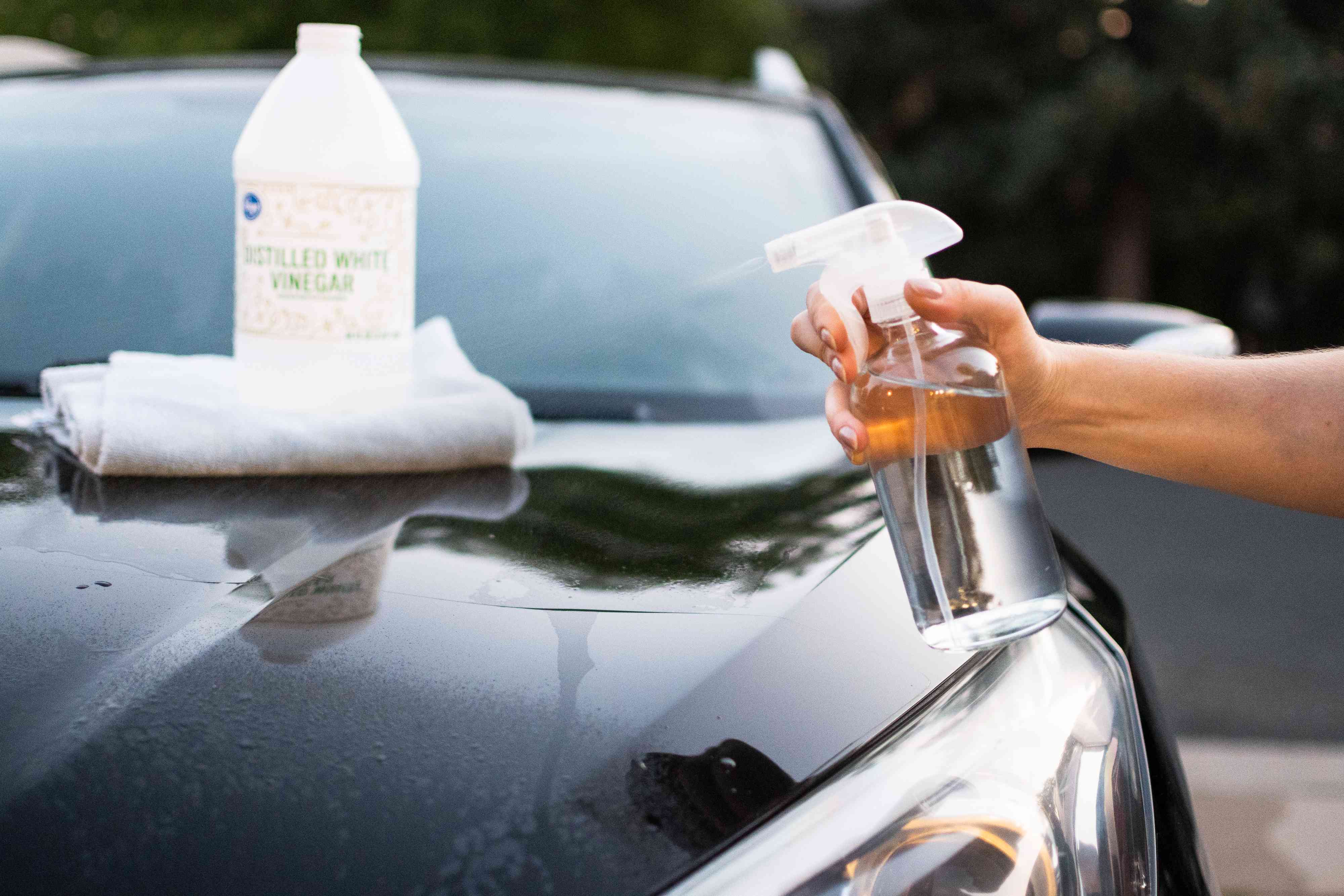How To Remove Water Stains From Windshield

Ah, the bane of every meticulously detailed car: water spots. While seemingly innocuous, those stubborn mineral deposits left behind by evaporating water can etch themselves into your windshield, obscuring your vision and diminishing your car's pristine appearance. Understanding the enemy – hard water – and employing the correct tactics are crucial for a successful removal. This isn't just about wiping the glass; it's about dissolving and removing the mineral buildup without damaging the delicate surface.
Understanding the Enemy: Hard Water & Etching
Hard water, the culprit behind water spots, is rich in minerals like calcium and magnesium. When water evaporates, these minerals are left behind. Initially, they appear as faint, easily removable spots. However, over time, these minerals can chemically bond with the glass surface, essentially etching themselves in. This etching is particularly common in areas with consistently hard water, or if the spots are left untreated for extended periods. The longer they linger, the more aggressive the removal process needs to be.
Assessment & Preparation
Before launching your attack, a thorough assessment is vital. First, clean the windshield with a dedicated glass cleaner and a microfiber towel. This removes surface dirt and grime, allowing you to clearly see the extent of the water spots. Examine the spots closely. Are they raised, flat, or barely visible? Raised spots are usually easier to remove, while etched spots require more aggressive methods.
Gather your arsenal. You'll need:
- Dedicated Glass Cleaner: Avoid ammonia-based cleaners, as they can damage some window tints and trim.
- Microfiber Towels: Use several clean, high-quality microfiber towels to avoid scratching the glass.
- White Vinegar: A mild acid that can dissolve mineral deposits.
- Distilled Water: For diluting vinegar and rinsing.
- Baking Soda: A mild abrasive that can help lift stubborn spots.
- Detailing Clay Bar: For removing embedded contaminants.
- Glass Polish (Cerium Oxide): For more severe etching.
- Applicator Pads: For applying polish evenly.
- Optional: A random orbital polisher can significantly speed up the polishing process.
The Gentle Approach: Vinegar Solution
Start with the least aggressive method: a vinegar solution. Mix equal parts white vinegar and distilled water in a spray bottle. Spray the solution onto the affected areas of the windshield. Let it dwell for a few minutes (5-10), allowing the vinegar to loosen the mineral deposits. Then, thoroughly wipe the area with a clean microfiber towel. Rinse with distilled water and dry with another clean towel. Repeat as needed. This method is often effective for fresh or light water spots.
Stepping Up: Baking Soda Paste
If the vinegar solution doesn't fully remove the spots, try a baking soda paste. Mix baking soda with a small amount of distilled water to create a thick paste. Apply the paste to the water spots and gently rub it in a circular motion using a microfiber towel. Be careful not to apply too much pressure, as baking soda is mildly abrasive. Rinse thoroughly with distilled water and dry with a clean towel. This method is effective for slightly more stubborn water spots.
The Clay Bar Treatment
A detailing clay bar is excellent for removing embedded contaminants that vinegar and baking soda can't reach. Ensure the windshield is clean and lubricated with a dedicated clay bar lubricant (or even soapy water). Gently glide the clay bar across the affected areas, using light pressure. The clay bar will pick up any remaining mineral deposits and contaminants. Reshape the clay bar frequently to expose a clean surface. Afterward, thoroughly clean the windshield with glass cleaner and dry.
The Heavy Artillery: Glass Polish (Cerium Oxide)
For heavily etched water spots, a glass polish containing cerium oxide is often necessary. Cerium oxide is a fine abrasive that can effectively remove the etched mineral deposits. Apply a small amount of polish to an applicator pad. If using a random orbital polisher, use a dedicated polishing pad for glass. Work the polish into the glass in a circular motion, applying moderate pressure. If polishing by hand, be prepared for some elbow grease. Keep the pad lubricated with a spritz of water as needed. Monitor the surface temperature to prevent overheating. After polishing, thoroughly clean the windshield with glass cleaner and inspect the results. This process may need to be repeated for heavily etched spots.
Prevention is Key
Once you've successfully removed the water spots, the best strategy is prevention. Regularly wash and dry your car, paying particular attention to the windshield. Consider applying a hydrophobic coating or sealant to the glass. These coatings repel water, preventing it from beading up and leaving behind mineral deposits. Promptly remove any water spots that do appear, before they have a chance to etch into the glass. By following these tips, you can maintain a crystal-clear windshield and keep your car looking its best.
